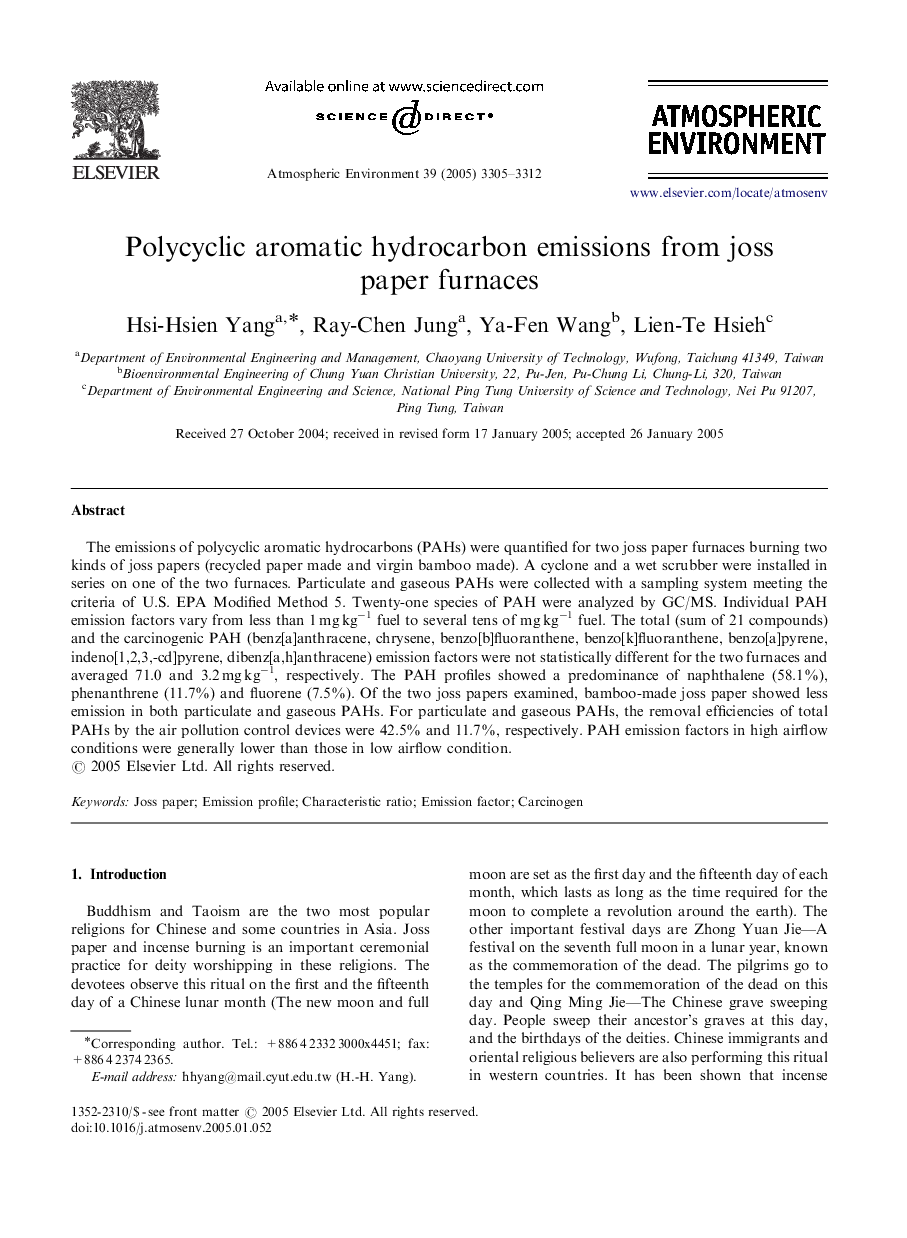| Article ID | Journal | Published Year | Pages | File Type |
|---|---|---|---|---|
| 4444158 | Atmospheric Environment | 2005 | 8 Pages |
The emissions of polycyclic aromatic hydrocarbons (PAHs) were quantified for two joss paper furnaces burning two kinds of joss papers (recycled paper made and virgin bamboo made). A cyclone and a wet scrubber were installed in series on one of the two furnaces. Particulate and gaseous PAHs were collected with a sampling system meeting the criteria of U.S. EPA Modified Method 5. Twenty-one species of PAH were analyzed by GC/MS. Individual PAH emission factors vary from less than 1 mg kg−1 fuel to several tens of mg kg−1 fuel. The total (sum of 21 compounds) and the carcinogenic PAH (benz[a]anthracene, chrysene, benzo[b]fluoranthene, benzo[k]fluoranthene, benzo[a]pyrene, indeno[1,2,3,-cd]pyrene, dibenz[a,h]anthracene) emission factors were not statistically different for the two furnaces and averaged 71.0 and 3.2 mg kg−1, respectively. The PAH profiles showed a predominance of naphthalene (58.1%), phenanthrene (11.7%) and fluorene (7.5%). Of the two joss papers examined, bamboo-made joss paper showed less emission in both particulate and gaseous PAHs. For particulate and gaseous PAHs, the removal efficiencies of total PAHs by the air pollution control devices were 42.5% and 11.7%, respectively. PAH emission factors in high airflow conditions were generally lower than those in low airflow condition.
